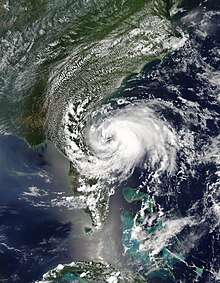HURRICANELONNY wrote:Nah. That won't happen. The pattern will change. It's not a La Nina like 98. It's an El Nino. The pattern will soon change.

Actually, 1998 was an El Nino year, not a La Nina. As a matter of fact, the El Nino of 1997 - 1998 was one of the strongest on record in North America. This El Nino carried over from the Fall/Winter '97 in which it bought much milder and wetter conditions with flooding across California and the Southern CONUS, and here in Florida. Later, we transitioned to extreme drought across Florida in the Spring/Summer'98 which lead to one of the worst wildfire seasons ever across the peninsula.
This excerpt below from the National Climate Data Center explains well what occured back in 1998 and you can clearly see that we are experiencing similar conditions currently as to what happened then with the dominant ridge pattern, which the peninsula has seen in place since the beginning of May:
______________________________________________________
Climate Change, El Niño, and the Florida Drought.Although the links are not clear, a possible consequence of climate change is more frequent and vigorous El Niño events. The exceptional global warmth for the year to date (January - May, 1998) is clearly El Niño related, however this warmth can also be viewed as being superimposed on top of any climate change being observed.
Another suspected consequence of climate change is enhanced climate variability, possibly bringing on more frequent and severe extreme events, such as flooding and drought. Florida experienced an unusually large amount of El Niño precipitation and mild temperatures during the winter and early spring. However, precipitation in central to northern Florida has been suppressed for the period beginning in late March to the end of June due to an intense ridge of high pressure, with some locations, such as Melbourne, receiving only a few percent of normal precipitation for the period. Temperatures for the same period have been exceptionally warm.
The unusually wet mild winter promoted rapid growth in bushes and grass (i.e. a lush under-story). These climatic conditions were immediately followed by a severe drought during the late spring and early summer, which is normally the beginning of the wet season . The recent period of extended daylight, intense sunshine, and unusually hot dry weather, caused the short rooted under-story to rapidly dry out, and serve as fuel for the pervasive fires throughout Florida.
This is an excellent example of how a combination of extreme events: wet and mild in the winter, dry and hot in the summer, causes severe environmental impacts. Climatic data indicates that the such extreme events are increasing over the United States.








